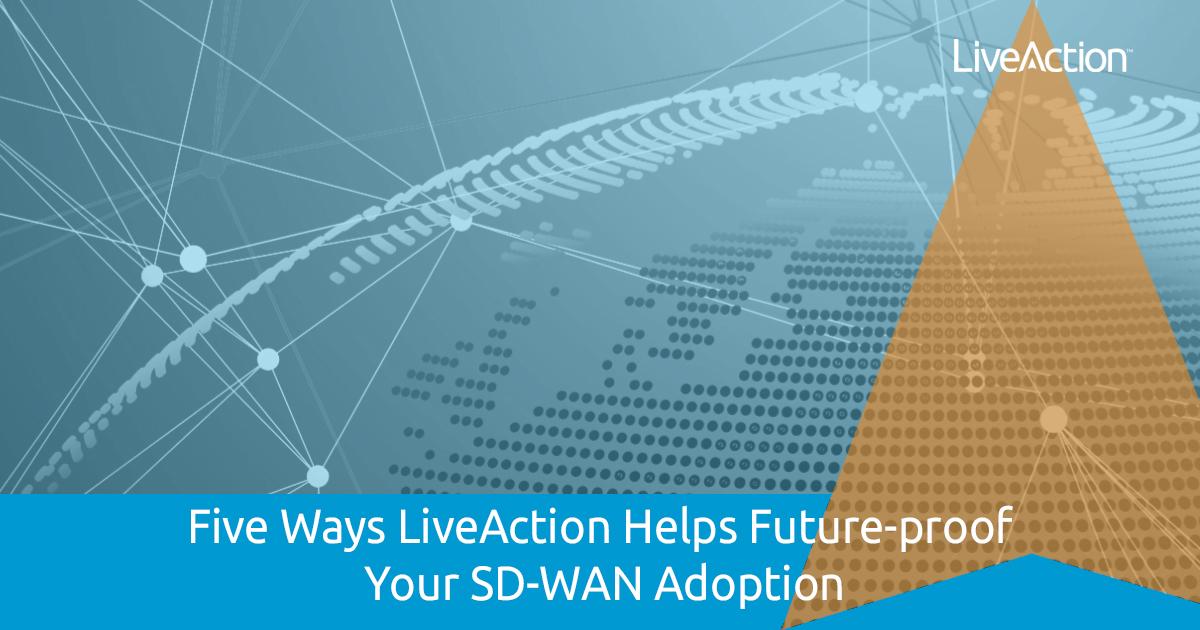
 SD-WANs are dramatically reshaping the way businesses deliver applications to customers and employees. This new WAN architecture emphasizes flexible, intelligent software to rapidly provision network connectivity – via MPLS, business broadband, or 4G/5G/LTE – and nimbly control it via the cloud with relatively low-cost edge devices in lieu of proprietary and expensive premise-based equipment. This new approach delivers increased network agility and significant cost optimization while meeting the ever-increasing performance expectations of end-users relative to a traditional monolithic network.
SD-WANs are dramatically reshaping the way businesses deliver applications to customers and employees. This new WAN architecture emphasizes flexible, intelligent software to rapidly provision network connectivity – via MPLS, business broadband, or 4G/5G/LTE – and nimbly control it via the cloud with relatively low-cost edge devices in lieu of proprietary and expensive premise-based equipment. This new approach delivers increased network agility and significant cost optimization while meeting the ever-increasing performance expectations of end-users relative to a traditional monolithic network.
This ability to deliver network connectivity smarter, faster and more cost effectively is the catalyst of a staggering market transition as companies race to embrace the benefits of SD-WAN migration. Case in point, IDC forecasts that the worldwide SD-WAN market spending will be $8 Billion by 2021, at a CAGR of approximately 70 percent. And Gartner forecasts that by the end of 2021, more than 65 percent of enterprises will have deployed SD-WAN technology. The pace of this market transition is truly exceptional and driven by the clear and compelling return on investment.
So what’s the catch? “Software Defined” drives network complexity as the network is now making intelligent routing decisions based on real-time situational awareness to optimize utilization. This significantly increases the burden placed upon the network operations (NetOps) teams that are responsible for matching the needs of the business to the performance of the underlying network. Because of that, teams are shifting to intent-based networking, where a network administrator sets policy (the desired state of operations) then relies on automated systems and machine learning algorithms to orchestrate implementation of those policies.
In theory, this works, but in practice, this places an even greater burden on NetOps to proactively ensure policies are being met versus a reactive wait-until-it-breaks/fix approach. Proactive management depends on gaining visibility into the network to quickly visually assess what’s happening, validate the intent of policies being executed, and determine the source of the underlying issue. This can quickly become the ultimate “needle-in-a-haystack” scenario. LiveAction’s ability to show critical performance information across the entire network, including the SD-WAN, helps organizations extend their network investment and gain complete insight from the core to the edge. LiveAction uniquely empowers NetOps to excel in a software-defined world.This level of functionality is now required as organizations deploy these new technologies, making SD-WAN visibility the new frontier for network performance monitoring and diagnostic (NPMD) solutions. LiveAction helps provide that SD-WAN visibility in 5 primary ways:
- Network Coverage – Get a comprehensive, real-time view of your SD-WAN domain with end-to-end visibility, multi-vendor, and multi-cloud support, with granular dashboards, alerts and reporting for both current and historical telemetry data (Flow, SNPM, REST API). Visualize the application and tunnel path and monitor performance of both the physical underlay and the virtual overlays to deliver end-to-end service quality. Understand what’s going on immediately and respond quickly to problems in both north/south and east/west traffic.
- Flexible deployment and operations – Many IT organizations require different environments to manage system software. LiveNX is packaged in either; public cloud (AWS, Azure), on-premises licensed or bundled in a server appliance. This flexibility is convenient for accelerated prototyping, cost center driven budgets, operating policies or international preferences. LiveNX will meet your needs.
- Design, Verify and Operate SD-WAN domains – Leverage your telemetry data gathered by LiveNX to manage and baseline applications, sites and devices and to interface with tunnel path and QoS policies to support the design of intent-based policies and facilitate migration from traditional WAN technologies. LiveNX presents a complete set of functions and capabilities to support the design, verify and operate phases of your project.
- Visual Analytics – Given the distributed nature of today’s hybrid computer networks, Engineering and Operations need a view into their environment that summarizes and facilitates progressive action. Visual analytics is a major step forward in gathering multiple data sets and presenting them in views, graphs, diagrams and maps that illustrate current and historic activity. For example, the LiveNX ‘Site to Site Analysis’ view presents the topology with several layers depicted, including application, VPN, QoS and Service Provider status.
For the complex situations that occur in your SD-WAN project, LiveNX has rich integrations with Cisco to visualize the environment, identify trends, hot spots and issues and integrate with the rest of your IT systems and operations for continual visibility and rapid troubleshooting.
As most organizations currently have a network in place, SD-WAN is typically a migration effort that happens in several phases. It will start with the planning, design, and budget processes, then move to approval cycles given positive ROI. Then to proof of concept and finally the push to production deployment of the cloud service. Across this entire series of phases, LiveAction is well-positioned to be your preferred partner for Network Performance Monitoring and Diagnostics, AIOps and NetOps solutions.
We welcome you to explore how LiveAction can help your SD-WAN project. Please visit our web page at https://www.liveaction.com/solutions/network-performance/sd-wan/


